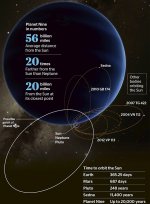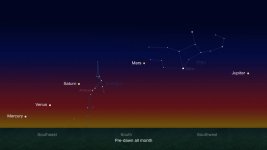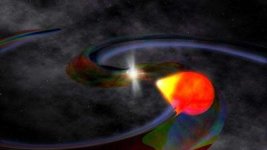Man of Honour
New Horizons sends back a picture of "Wright Mons", a possible volcano on Pluto. This feature was informally named by the New Horizons team in honour of the Wright brothers.:


Wright Mons in Color. This composite image of a possible ice volcano on Pluto includes pictures taken by the New Horizons spacecraft’s Long Range Reconnaissance Imager (LORRI) on July 14, 2015, from a range of about 30,000 miles (48,000 kilometers), showing features as small as 1,500 feet (450 meters) across. Sprinkled across the LORRI mosaic is enhanced color data from the Ralph/Multispectral Visible Imaging Camera (MVIC), from a range of 21,000 miles (34,000 kilometers) and at a resolution of about 2,100 feet (650 meters) per pixel. The entire scene is 140 miles (230 kilometers) across.
Credits: NASA/JHUAPL/SwRI








